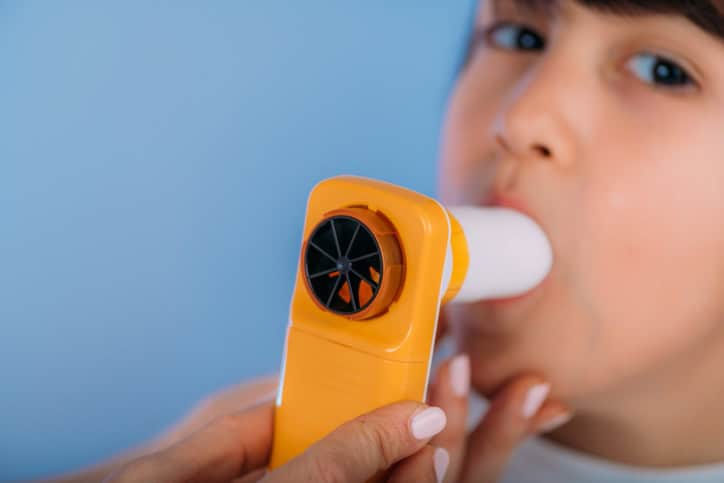The American Lung Association estimates that over 4.2 million U.S. children have some form of chronic respiratory issue, which asthma being by far the most common. Respiratory illnesses affect your child’s lungs, and their ability to breathe freely. When your child wheezes, seems short of breath frequently or complains they can’t really seem to catch their breath, Dr. Ahmad Chatila here at Alzein Pediatrics can help. Fellowship trained and board certified in Pediatric Pulmonary, one of the tests Dr. Chatila may recommend for your child is spirometry. With precise and reliable measurements, spirometry offers us a relatively easy way to diagnose and monitor breathing disorders and lung disease.
Unlike a strep test, a spirometry test can’t identify if your child has a particular condition. Instead, think of spirometry like a blood-pressure test or getting temperature taken. The spirometer lets us measure your child’s lung function in much the same way we check height and weight. Spirometry tells us how much air your child’s lungs can hold and how quickly they can move that air in and out of the body. Dr. Chatila can use this information to identify potential lung obstructions, to inform treatment options, and to track breathing improvement during treatment.
In its early years, spirometry was largely used with adult patients because the test’s reliability depended on following a set of breathing instructions and manipulating the device in precise ways and testing children didn’t produce consistent and reliable measurements. Current spirometers have become much more user-friendly and now, we get useful results from children.
When your child is having a spirometry test, one of our healthcare professionals will provide directions on when and how to breathe into a tube connected to a measuring device. That device could be a simple plastic tube with a ball inside it or a computer.
Like so many health measurements, spirometry results are demographically particular. Your child’s gender, weight, age and other factors shape their optimal lung capacity. While breathing into a tube and reading the measurement is relatively easy, understanding what that measurement means depends on comparing it to other measurements from other children in the same demographic population. Dr. Chatila will make these comparisons and analyze the relationship between your child’s total lung volume and the rates at which they bring that air into and out of the lungs.
Generally speaking, any result within 80% of yur child’s demographic average is considered good; anything below that threshold requires further examination and treatment.
What that examination and treatment will look like will depends on the possible underlying conditions. While asthma, COPD, bronchitis, and cystic fibrosis all impact lung function, they don’t impact it in the same ways and so require different treatments.
Your child will regularly take spirometry tests so we can keep an eye on their lung function. Dr. Chatila will analyze results to answer these questions:
- Is lung function adequate?
- Is it getting declining or improving?
- Did any new medications make a difference?
With the help of regular spirometry testing, Dr. Chatila and all your healthcare providers at Alzein Pediatrics can be sure your child is getting the optimal care possible for any respiratory illnesses.
If you have any questions about your child’s health, please message us through your patient portal. We are here to help!


